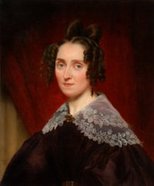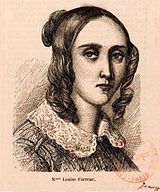
She later resumed her studies under Reicha. Upon finishing her interrupted studies, he went back to concerts and grew considerably famous during the 1830s. In the early of the 1840s, her reputation remained consistent, until she was appointed as Professor of Piano in Paris Conservatory, which was a permanent position, in 1842. It was indeed one of the most famous in Europe, and she held the said position for 30 years. However, for about 10 years, she was receiving less compensation than the males. It was only when her nonet successfully premiered, which also featured Joseph Joachim, a famous violinist, when she demanded that she receive the same pay her male counterparts were receiving.
Aside from performing and teaching, Louis Farrenc also edited and produced a book on early performance styles in music. Her reputation stayed on with her name being mentioned in other books such as Antoine François Marmontel’s Pianistes célèbres even after her death. BY 1850, her nonet gained some fame, as well as her trios and two piano quintets. However, her chamber music apparently fell into oblivion after she died.
She first composed only for the piano from the 1820s to the 1830s. When some of her pieces received high praises from critics like Schumann, she gave some try in making larger compositions, this time, for both orchestra and chamber music. She wrote most of her chamber music during the 1840s. Eventually, her chamber music was regarded as the best ones among her works.
Aside from performing and teaching, Louis Farrenc also edited and produced a book on early performance styles in music. Her reputation stayed on with her name being mentioned in other books such as Antoine François Marmontel’s Pianistes célèbres even after her death. BY 1850, her nonet gained some fame, as well as her trios and two piano quintets. However, her chamber music apparently fell into oblivion after she died.
She first composed only for the piano from the 1820s to the 1830s. When some of her pieces received high praises from critics like Schumann, she gave some try in making larger compositions, this time, for both orchestra and chamber music. She wrote most of her chamber music during the 1840s. Eventually, her chamber music was regarded as the best ones among her works.

 RSS Feed
RSS Feed